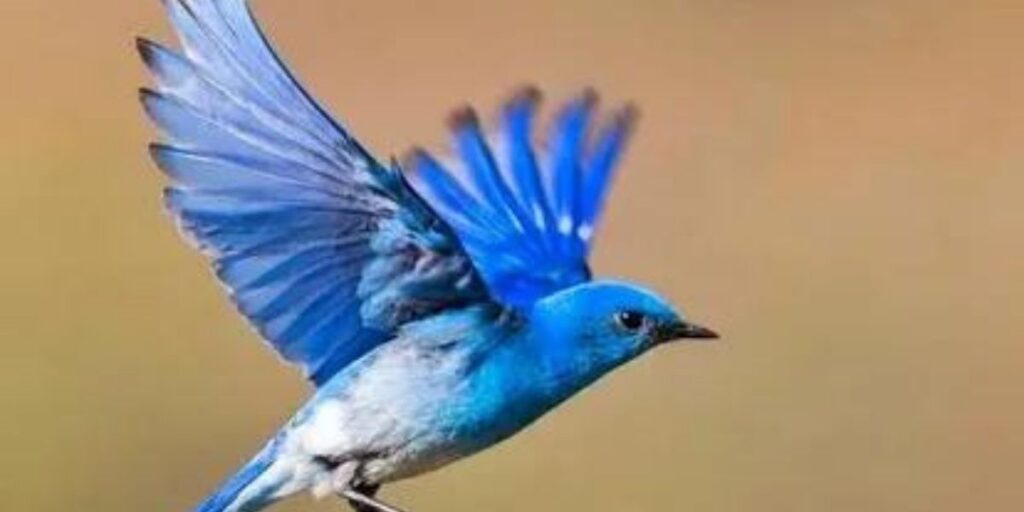When it comes to blue birds, their vibrant plumage often captivates bird watchers and nature enthusiasts alike. One of the most charming types of blue birds is the Eastern Bluebird, a symbol of hope and renewal in various cultures. With its iridescent blue back and rust-colored chest, this bird not only brightens up meadows but also plays a crucial role in controlling insect populations—making it an ally for gardeners everywhere.
Moving from open fields to forests, the Tree Swallow flaunts its glossy blue-green feathers while displaying impressive aerial acrobatics as it catches insects mid-flight. These social birds are known for their communal nesting habits; observing them can provide insights into their intricate social structures that mirror human connections. In this article we explain the types of blue birds, stay connect with me.
What Are Blue Birds?
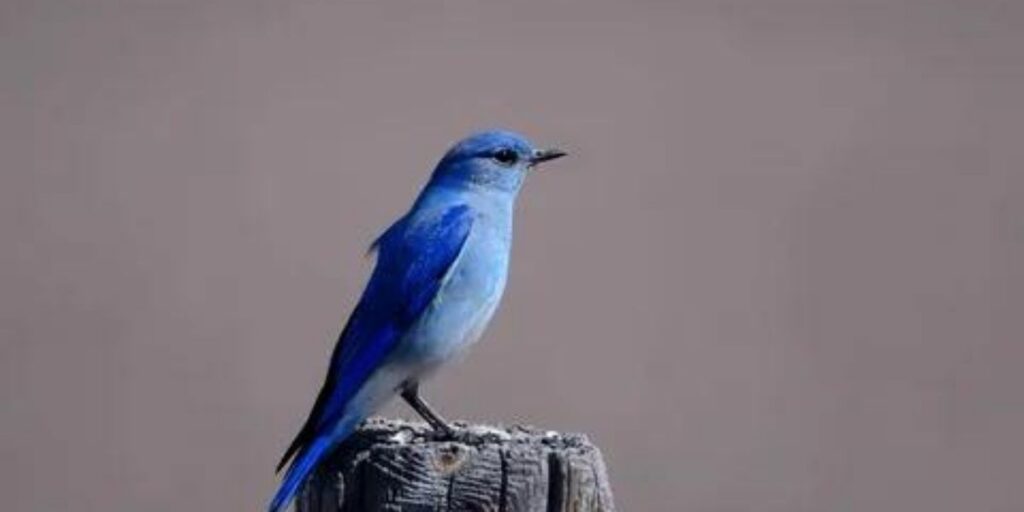
Blue birds are a fascinating and diverse group of avian species, renowned not only for their vibrant plumage but also for their varied lifestyles and habitats. Among the most recognized types of blue birds is the Eastern Bluebird, which graces open fields and gardens with its brilliant azure feathers. This charming bird symbolizes happiness and renewal in many cultures, often serving as a reminder to find joy in simplicity. Similarly, the Blue Jay showcases both stunning coloration and intelligence; these social creatures exhibit complex behaviors that include vocal mimicry and problem-solving skills.
Interesting Types of Blue Birds to Look For

1. Eastern Bluebird
The Eastern Bluebird is one of the most enchanting types of blue birds, displaying a vibrant cobalt hue that often captivates bird enthusiasts. Measuring about 6 to 8 inches in length, these small thrushes have a wingspan reaching up to 12 inches, making them somewhat compact yet robust in stature.
Typically seen flitting through open fields and gardens, their cheerful songs and delightful presence mark the arrival of warmer seasons. Eastern Bluebirds generally live around 2 to 4 years in the wild but can soar beyond a decade under ideal conditions.
Diet plays an essential role in their life cycle; they primarily feast on insects and berries, skillfully transitioning from hunting for worms during spring to indulging in fruits late summer. This adaptability not only showcases their resilience but also reveals how changing food availability shapes their foraging habits across different habitats.
2. Blue Jay

The Blue Jay, a vibrant member of the types of blue birds found across North America, captivates birdwatchers with its striking plumage and dynamic personality. Typically measuring around 9 to 12 inches in length, these birds exhibit not only beauty but also intelligence; they are known for their complex social structures and ability to mimic the calls of other birds. First i tell you the main diference of the Robin vs Cardinal. While robins are medium-sized birds and cardinals tend to be slightly smaller , get more info in a blog.
A Blue Jay’s lifespan can reach up to 7 years in the wild, though many factors like habitat and predation can influence this duration. They are highly adaptable creatures that thrive in varied environments from suburban landscapes to dense forests.
Feeding primarily on nuts, seeds, and insects, Blue Jays play a crucial role in their ecosystems by helping to disperse acorns that support oak tree growth.
Their dietary habits change with the seasons; during winter months when food is scarce, they’ll often steal from other birds or forage more aggressively for available sustenance. Their loud and varied calls are not just a means of communication but also serve as alerts to potential dangers within their territory.
3. Indigo Bunting
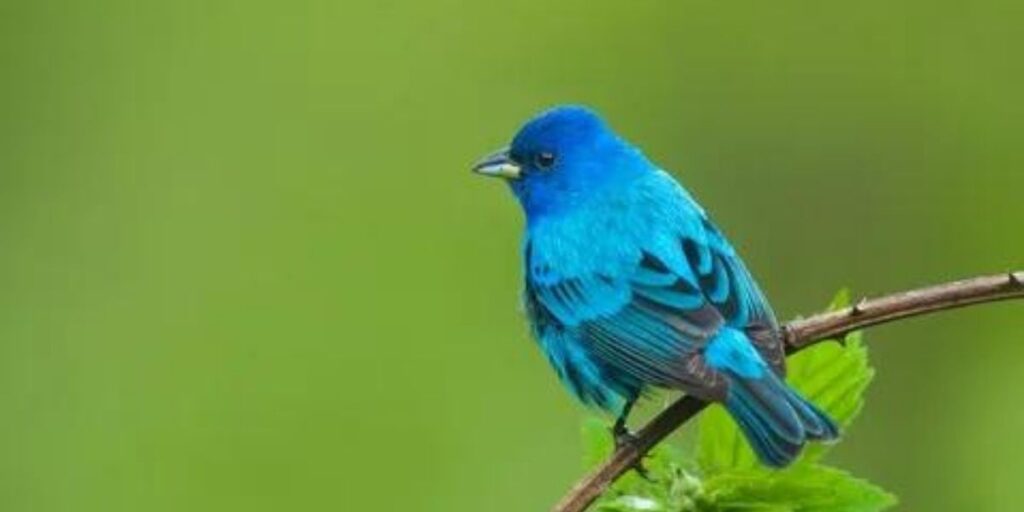
The Indigo Bunting, a striking member of the types of blue birds, captivates bird watchers with its vibrant plumage and delightful songs. Adult males sport an electric blue coat during breeding season, creating a stunning contrast against the verdant landscape. If you’re bird lover and you have no info about Symbolism of Red Birds: the meaning of red birds transcends their vibrant color. Get detailed info in a blog.
They are small songbirds, measuring around 5 to 6 inches long with a wingspan of approximately 8 to 9 inches, allowing them to flit gracefully through their habitats. Typically found in open woods and fields across North America, these birds are migratory, wintering in Central America and parts of Mexico.
Indigo Buntings flourish in diverse environments, showcasing their adaptability as they thrive on seeds and berries while also indulging in insects during warmer months for added protein. Their lifespan averages about three years in the wild;
Some individuals can live longer under favorable conditions. These charming creatures start nesting early spring as they return from migration and exhibit fascinating behaviors by using celestial navigation during their long journeys—a remarkable trait that highlights nature’s complexity within these birds blue.
4. Mountain Bluebird
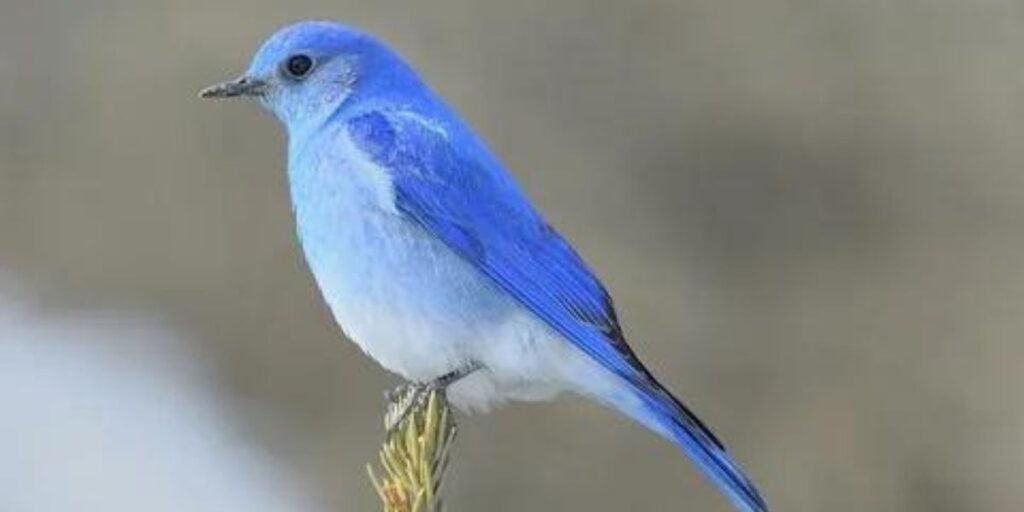
The Mountain Bluebird, a stunning example among the types of blue birds, captivates bird enthusiasts with its vibrant azure plumage and lively demeanor. Typically measuring around 7 to 8 inches in length, this small bird displays sexual dimorphism; males flaunt brilliant blue feathers, while females present a more subdued gray-brown hue.
These blue beauties thrive in open habitats such as grasslands and meadows in western North America, making them a common sight against mountainous backdrops. They mature rather quickly and often breed by their first year, showcasing their adaptation skills.
Mountain Bluebirds primarily feast on insects and berries, reflecting their preference for high-protein diets during the breeding season when they require energy for nurturing young chicks. Their impressive lifespan can reach up to seven years in the wild if predation threats are minimized. Engagingly social creatures, they can be seen perching conspicuously before diving to catch insects midair or foraging on the ground—a behavior that offers clues into their dynamic interaction with the ecosystem.
5. Steller’s Jay
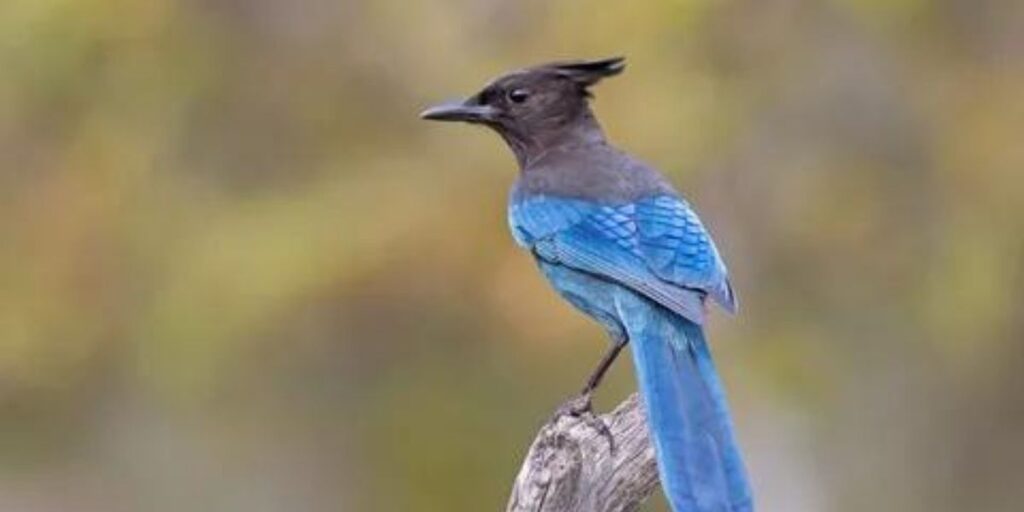
Among the fascinating types of blue birds, the Steller’s Jay stands out not just for its vibrant plumage but also for its varied habits. Typically measuring around 11 to 12 inches in length, these striking birds have a life span that can reach up to 16 years in the wild, showcasing their adaptability and resilience. Younger Steller’s Jays are often seen engaging in playful behavior, a clear display of their social nature as they form bonds with family groups before venturing out on their own.
In terms of diet, these intelligent birds are omnivorous; they’ll feast on a mix of fruits, nuts, insects, and the occasional small animal or egg. Their ability to forage widely allows them to thrive in diverse environments—from coniferous forests to urban parks—making them easily recognizable by their loud calls and raucous chatter.
Observing a Steller’s Jay brings an exhilarating touch of the wild into everyday life; as they dart among branches with uncanny agility and interact with one another through complex vocalizations, it’s easy to appreciate these remarkable members among various types of blue birds.
6. Lazuli Bunting
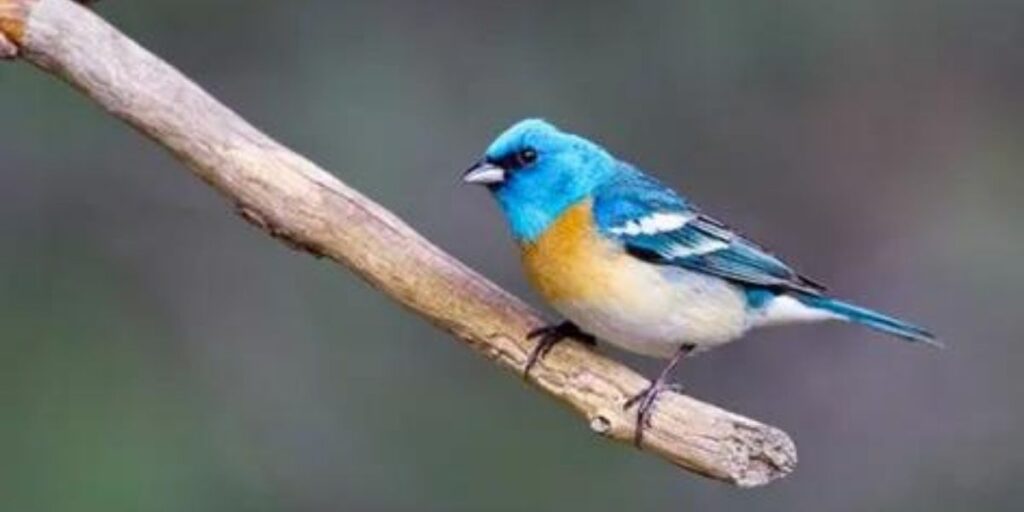
The Lazuli Bunting is a stunning representation of the diversity among types of blue birds. Males are particularly eye-catching, donning bright azure plumage with touches of orange on their chest during the breeding season, while females wear a more subdued brownish hue that offers camouflage against predators.
These small songbirds measure about 5 to 6 inches in length and can typically weigh around 0.5 to 1 ounce. Found primarily in the western regions of North America, they thrive in open woodlands and shrubby areas where they weave their nests low to the ground.
In terms of behavior, Lazuli Buntings are known for their vibrant melodies which serve both as territory markers and mating calls, providing an enchanting soundtrack wherever they reside. They usually live up to 3 years in the wild but have been recorded reaching ages beyond five under optimal conditions.
As insectivorous creatures during warmer months, they feast on caterpillars, beetles, and other small insects; this diet shifts to seeds and berries come fall—a perfect adaptation for survival across varying seasons.
How to Spot Blue Birds
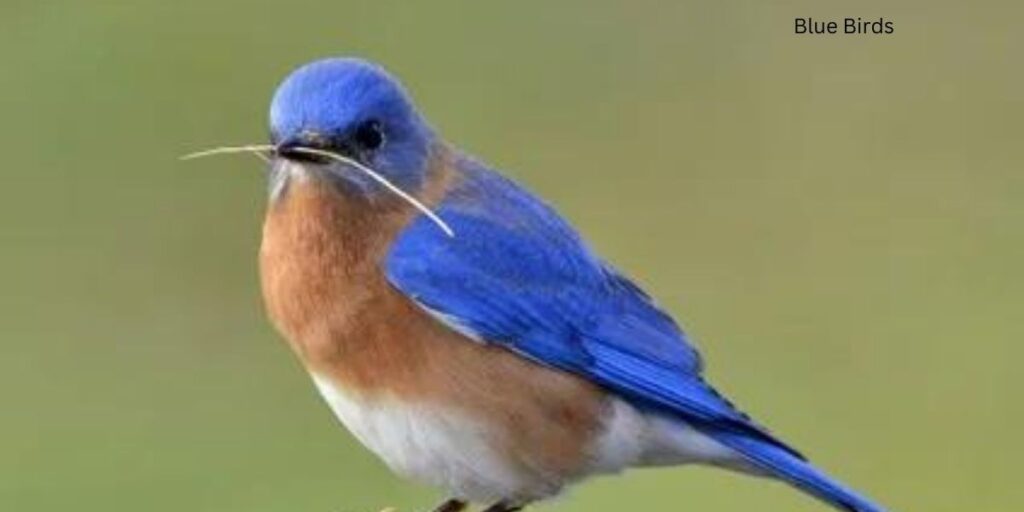
- When it comes to spotting blue birds, understanding the diverse types within this vibrant color palette can greatly enhance your birdwatching experience.
- While many people may immediately think of the striking Eastern Bluebird or the enchanting Indigo Bunting, there are lesser-known species like the Tree Swallow and Blue Jay that also offer stunning hues.
- These birds often inhabit specific environments, so recognizing their preferred habitats is crucial; for instance, look for treetop-dwelling Blue Grosbeaks in open fields or enjoy observing a flock of Barn Swallows swooping over water bodies.
- Taking note of seasonal migrations can further refine your birdwatching strategy. Many blue-hued species are migratory, appearing in different regions at varying times of the year.
- For instance, while some may frequent gardens and backyards during spring for nesting season, others might only be present during their migration stopovers in late summer or early fall.
- Observing feeding behaviors—such as a Blue Jay’s animated antics at bird feeders—can also provide critical clues about their presence. So grab your binoculars and immerse yourself in the intricate dance of these mesmerizing avian wonders!
Facts About Blue Birds
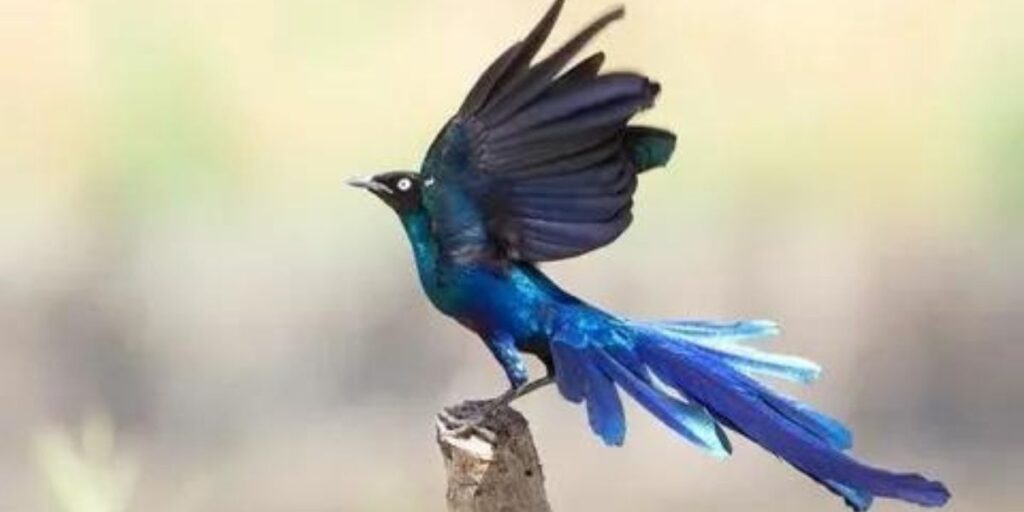
Diet
Blue birds, a captivating group encompassing various species like the Eastern Bluebird and the Blue Jay, have intriguing dietary habits that reflect their adaptability and preferences. These vibrant avians primarily feast on insects, fruits, and seeds, which highlight their role in the ecosystem as both predators and seed dispersers. The ability to shift between these food sources depending on seasonal availability is what sets blue birds apart; for instance, during spring and summer months, they may consume more insects to nourish their young, while in autumn they indulge in an array of berries.
Nesting
Blue birds exhibit fascinating nesting behaviors unique to their species. For instance, Eastern Bluebirds are known for their preference for cavities—whether they be natural tree holes or man-made birdhouses. Males often engage in a charming courtship display by fluttering around prospective nests and singing melodiously to attract females. Interestingly, once the female selects a mate, she takes charge of building the nest, primarily using grasses, feathers, and even bits of paper to create a cozy haven for her young.
Migration
Migration patterns of blue birds reveal a fascinating interplay between instinct and environment. Many species, like the Eastern Bluebird, demonstrate remarkable adaptability as they navigate varied landscapes during seasonal migrations. These vibrant aviators often travel hundreds of miles between their breeding grounds in North America and wintering habitats in warmer regions. What’s truly astonishing is their ability to utilize subtle cues from celestial navigation to find their way—an ancient skill honed through millennia.
Among the types of blue birds, the Blue Jay stands out not just for its striking plumage but also for its intelligence and social structure during migration. These birds often form large flocks that showcase intricate social dynamics, enabling them to share vital information about food sources along their migratory routes.
Fun Activities for Kids
- Engaging kids in outdoor activities not only fosters a love for nature but also enhances their observational skills.
- A delightful adventure could involve a bird-watching excursion, where children can learn about various types of blue birds they might encounter in their surroundings.
- From the cerulean hues of the Eastern Bluebird to the vibrant indigo shades of the Indigo Bunting, these captivating creatures offer an opportunity for children to develop patience and appreciation for wildlife.
- Equip your young explorers with binoculars and a simple guidebook on local birds; witnessing these lovely blue jewels gracefully flit between branches will surely ignite their curiosity.
Protecting Blue Birds
Protecting blue birds, a vibrant and beloved group of avian species, requires an understanding of their diverse habitats and the specific challenges they face. From the dazzling Eastern Bluebird to the striking Indigo Bunting, these birds exemplify nature’s artistry but are increasingly threatened by habitat loss and climate change. Conservation efforts must prioritize the preservation of grasslands and open woodlands that serve as breeding grounds for these blue-feathered wonders. Creating local initiatives that promote native plant gardens can also attract essential insects that provide food for both adults and their chicks.
Conclusion
The vibrant world of blue birds showcases a remarkable diversity that captivates birdwatchers and nature enthusiasts alike. From the striking Eastern Bluebird to the elusive Indigo Bunting, each species brings its own unique charm and personality to our ecosystems. Understanding these beautiful avian creatures not only enhances our appreciation for wildlife but also emphasizes the importance of preserving their natural habitats. As we continue to explore and protect these enchanting birds, let us remember our role in ensuring their survival for future generations. So grab your binoculars and head outside—who knows what stunning blue feathered friends you might encounter!
FAQs:
What Are Common Types Of Blue Birds?
Common blue bird species include the Eastern Bluebird, Blue Jay, Indigo Bunting, and Tree Swallow.
Is The Mountain Bluebird Truly Blue?
Yes, the Mountain Bluebird is predominantly bright blue, especially in males, with a lighter blue hue in females.
How Do Blue Birds Get Their Color?
The blue color in blue birds is primarily due to structural coloration, where microscopic structures reflect light in a way that makes them appear blue.
Where Can I Spot Blue Grosbeaks?
Blue grosbeaks are typically found in open habitats, including fields, shrubby areas, and along edges of woodlands throughout the southern United States and parts of Mexico.


